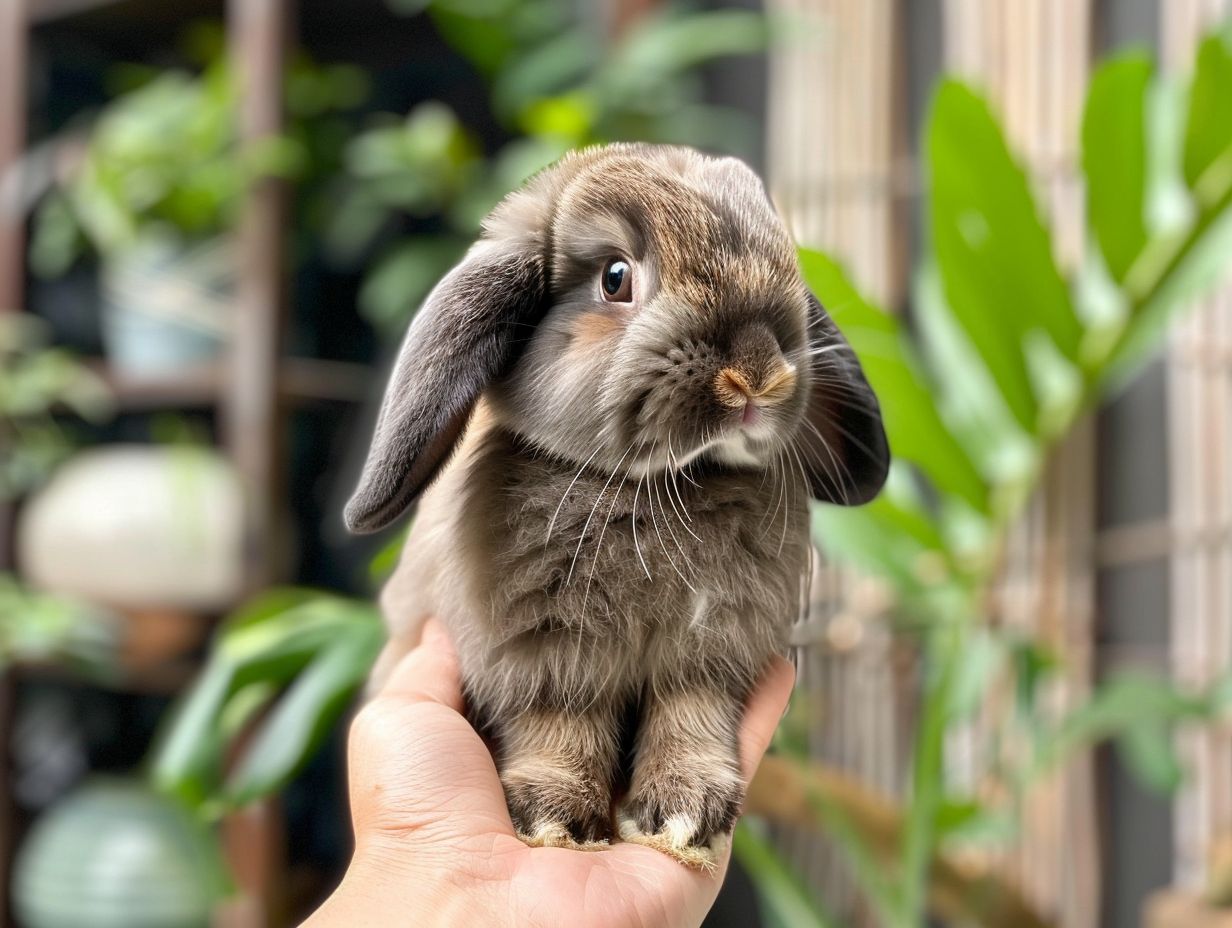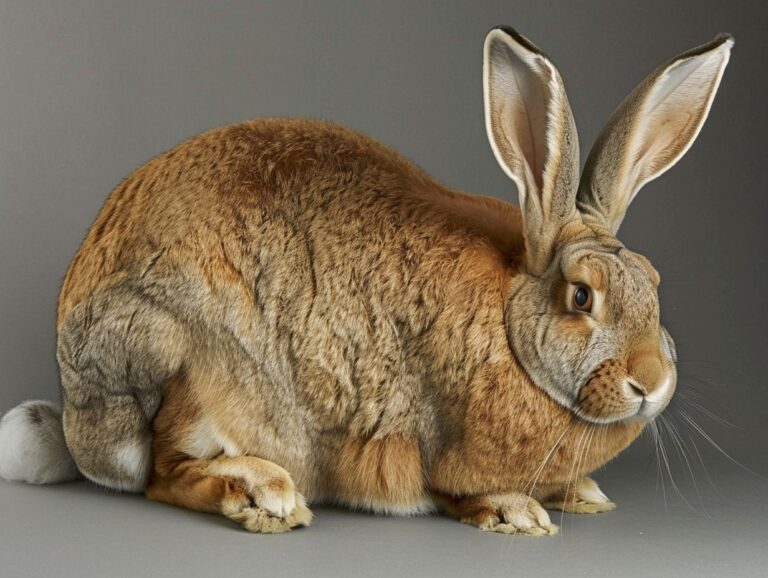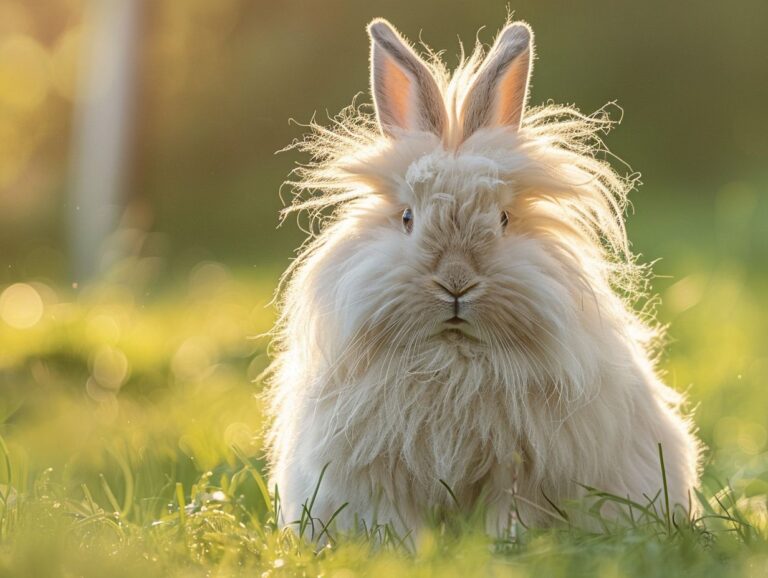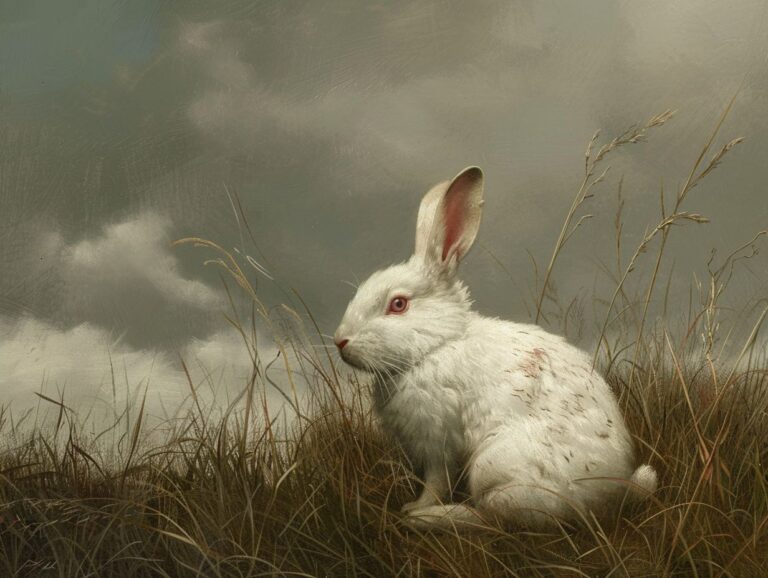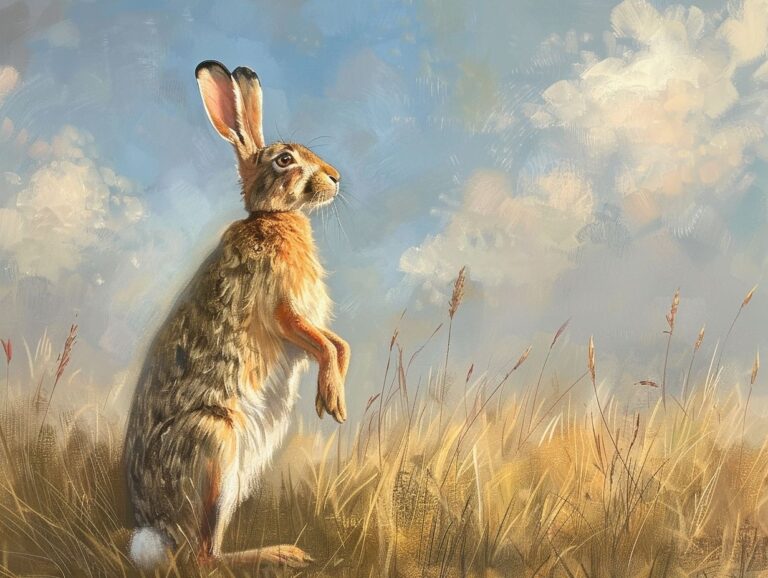Holland Lop Rabbit Breed: Characteristics, Care, History, and Breeding Practices
Considering getting a Holland Lop rabbit as a pet? These adorable creatures are known for their compact size, sweet temperament, and floppy ears.
We will explore the characteristics of Holland Lop rabbits, their history, and how to properly care for them. We will discuss breeding practices for those interested in breeding these charming rabbits.
Whether you’re a current owner or thinking about adding a Holland Lop to your family, this article has everything you need to know.
Key Takeaways:
What Is a Holland Lop Rabbit?
A Holland Lop Rabbit is a popular breed known for its distinctive appearance, gentle temperament, and overall health.
These rabbits have a compact body with a broad head, short ears that hang down the sides of their face, and adorable droopy eyes that give them a sweet expression. Their fur is soft and dense, coming in a variety of colors such as solid, broken, and shaded. The Holland Lop’s friendly disposition makes them perfect companions for both children and adults, as they are affectionate and social animals. They enjoy human company and are often described as playful and curious.
One of the advantages of owning a Holland Lop is their good health. When provided with proper care, a balanced diet, and regular veterinary check-ups, these rabbits can live a long and happy life. They are relatively easy to groom, requiring occasional brushing to keep their fur clean and prevent mats. The Holland Lop is an ideal choice for anyone looking for a delightful and low-maintenance pet.
What Are the Characteristics of a Holland Lop Rabbit?
The Holland Lop Rabbit breed is distinguished by its appearance, temperament, and health, making it a popular choice among rabbit enthusiasts.
Appearance
The appearance of a Holland Lop Rabbit is characterized by its compact size, distinctive drooping ears, and a variety of coat colors.
Holland Lop Rabbits are typically small with a dwarf-like build, making them incredibly adorable and popular as pets. Their ears, which hang down the sides of their heads, are a prominent feature and can sometimes touch the ground when fully extended. These rabbits can showcase a wide array of coat colors, ranging from solid to broken patterns, including shades of agouti, chinchilla, tan, and more. The short, dense fur of a Holland Lop adds to their charm, requiring regular grooming to keep it soft and neat.
Temperament
Holland Lop Rabbits are known for their friendly and gentle temperament, making them excellent pets for families and individuals alike.
They are affectionate creatures that enjoy human interaction and are particularly good with children, adding a touch of joy and warmth to any household. Their calm demeanor and playful nature make them easy to handle and bond with, creating wonderful companionship for both adults and youngsters alike. Due to their small size and docile character, Holland Lops are ideal for various living environments, whether it’s a spacious backyard or a cozy apartment setting.
Health
Ensuring the health of a Holland Lop Rabbit involves regular care, grooming routines, and vigilance against common health issues.
Regular veterinary check-ups are crucial for maintaining your Holland Lop Rabbit‘s well-being. These professionals can provide guidance on diet, vaccinations, and overall health assessment.
Grooming plays a significant role in preventing issues such as fur mites and matting. Regularly brush your rabbit to keep their coat clean and healthy.
Ensure a clean living environment to prevent respiratory problems. Watch for signs of illness like lethargy or changes in appetite as early detection is vital. By staying proactive and attentive, you can provide a happy and healthy life for your beloved pet.
What Is the History of Holland Lop Rabbits?

These charming rabbits were originally bred in the mid-20th century, aiming to create a compact, friendly breed suitable for both show and companionship. In the Netherlands, breeders selectively crossed French Lops and Netherland Dwarfs to achieve the distinctive Holland Lop characteristics.
In the U.S., the breed gained popularity in the late 1970s, thanks to breeders like Adriann Hinkle and Bob Herschbach, who further refined the breed standards and promoted them in rabbit shows across the country. Over time, the Holland Lop Rabbit Specialty Club emerged as a hub for enthusiasts to exchange knowledge, promote responsible breeding practices, and showcase these lovable rabbits.”
How to Care for a Holland Lop Rabbit?
Proper care for a Holland Lop Rabbit involves providing suitable housing, a balanced diet, and regular grooming to ensure their well-being and happiness.
When considering housing for your fluffy Holland Lop, remember to prioritize spaciousness and security. A large, well-ventilated enclosure with plenty of space for hopping and exploring is ideal. Ensure the cage is escape-proof and has a solid bottom to protect their delicate feet. For their diet, focus on high-quality hay, fresh vegetables, and a small amount of pellets to maintain their digestive health and prevent obesity. Grooming practices, including regular brushing and nail trimming, are essential to keep their beautiful fur and nails in top condition.
Housing
Holland Lop Rabbits require a comfortable and secure hutch or cage that provides ample space for movement and relaxation.
When setting up the ideal living space for your Holland Lop Rabbit, ensure that the hutch or cage is large enough to accommodate their playful nature. Opt for a hutch with a solid floor to protect their delicate feet and bedding for comfort.
Adding a cozy shelter within the hutch will offer your rabbit a safe place to retreat to when they need privacy or comfort. It’s essential to place the hutch in a well-ventilated area, away from direct sunlight and drafts, to maintain a comfortable environment for your furry friend.
Diet
Maintaining a well-balanced diet is crucial for the health and vitality of Holland Lop Rabbits, ensuring they receive the necessary nutrients for their well-being.
These adorable animals have specific dietary requirements that must be met to keep them healthy and happy. A diet consisting mainly of high-quality hay, fresh vegetables, and a limited amount of pellets is ideal for Holland Lop Rabbits.
- Hay is essential for their digestive health and should make up the majority of their diet. Offering a variety of leafy greens like romaine lettuce, parsley, and cilantro adds essential vitamins and minerals to their meals.
- When providing pellets, it’s crucial to choose a high-fiber, premium quality option to ensure balanced nutrition.
Proper portion sizes are key; monitor their food intake to avoid obesity and related health issues. Creating a feeding schedule that includes regular mealtimes helps establish a routine that rabbits thrive on. Remember, a well-fed rabbit is a happy rabbit!
Grooming
Regular grooming sessions are essential for Holland Lop Rabbits to maintain healthy fur, prevent matting, and address potential health issues.
Grooming practices for Holland Lop Rabbits play a crucial role in keeping their fur in top condition. To ensure their well-being, it is important to establish a regular grooming routine that includes brushing to remove loose fur and prevent tangling.
When grooming your Holland Lop, gentle handling is key to avoid stressing them. Using appropriate grooming tools such as a slicker brush or a comb designed for rabbits can make the process smoother for both you and your furry friend.
Hygiene routines, such as checking for any signs of parasites or skin issues during grooming sessions, are also vital to catch any potential Rhinelander rabbit breed health issues early.
Consistent grooming not only maintains the appearance of your rabbit but also contributes to their overall health and well-being.
Exercise
Regular exercise is vital for the well-being of Holland Lop Rabbits, promoting physical health, mental stimulation, and a fulfilling daily life.
Engaging in suitable activities like hopping obstacle courses, chewing on safe toys, and exploring bunny-safe spaces not only keeps Holland Lops physically fit but also provides essential mental enrichment. Establishing a consistent playtime routine, incorporating around 3-4 hours daily, helps them release pent-up energy and prevent boredom. Through regular physical movement, Holland Lops can maintain a healthy weight, strengthen muscles, enhance agility, and even prevent digestive issues. Encouraging exercise through interactive toys and supervised exploration can significantly improve their overall well-being.
What Are the Breeding Practices for Holland Lop Rabbits?

When selecting breeding stock for Holland Lop Rabbits, it’s crucial to opt for individuals with desirable traits such as gentle temperament and good health to pass on to the offspring.
- It’s recommended to introduce the female to the male’s territory for mating, as females can be territorial.
- After successful mating, provide the doe with a comfortable nesting area for the impending birth.
Monitoring the health of the pregnant doe and the newborns is essential, ensuring they receive proper nutrition and veterinary care for a thriving rabbitry.
Choosing Breeding Stock
Selecting quality breeding stock, including does and bucks with desirable traits, is a crucial step in ensuring healthy and successful litters of Holland Lop Rabbits.
When choosing breeding stock for Holland Lop Rabbits, it’s important to look for rabbits that exhibit characteristics such as good conformation, dense and soft fur, and a gentle temperament.
Genetic considerations play a significant role in breeding, as desirable traits can be passed down from one generation to the next. Understanding the genetics of potential breeding rabbits can help in predicting the outcomes of mating pairs. For more information on the mini lop rabbit breed, check out this comprehensive guide.
For does, fertility and mothering abilities are key factors to consider, while bucks should possess strong genetics to contribute positively to the offspring.
Mating and Pregnancy
The mating and pregnancy stages are critical in the breeding process of Holland Lop Rabbits, requiring careful monitoring of breeding dates, gestation periods, and doe health.
When initiating the breeding process, it’s essential to consider the mating timelines. Holland Lop Rabbits typically reach sexual maturity around 5 to 6 months, at which point they can start mating. Gestation periods for these adorable creatures last approximately 28 to 31 days. Once successfully mated, the doe’s health becomes a top priority to ensure a smooth pregnancy. Providing a stress-free environment and a well-balanced diet are vital elements to support the doe’s well-being during this crucial time.
Caring for Newborns
Caring for newborn Holland Lop Rabbits involves providing warmth, nutrition, and a safe environment, ensuring their healthy development and well-being.
One crucial aspect of caring for these delicate creatures is to ensure they are kept in a warm and cozy area to regulate their body temperature effectively.
Maternal care is essential during the initial weeks, as mother rabbits play a vital role in grooming, feeding, and keeping the newborns clean. Learn more about the Belgian Hare rabbit breed and its characteristics, care, history, and breeding practices.
It is important to maintain a clean environment, free from drafts and predators, to promote the growth and minimize stress of the Dutch rabbit breed.
Newborn Holland Lop Rabbits require specific nutrients in their diet to support their rapid growth, so providing a balanced diet is key to their overall health and well-being.
Weaning and Separation
The weaning and separation process in breeding Holland Lop Rabbits involves gradual transitions for the babies, ensuring their independence and well-being after separation.
Regarding weaning Holland Lop Rabbits, it is crucial to start the process around 6-8 weeks of age. This gradual transition helps the babies adjust to solid foods and become more independent. It is recommended to introduce timothy hay and fresh vegetables slowly alongside their mother’s milk to prevent digestive issues. Nutritional considerations play a significant role during this period, ensuring that the baby rabbits receive a balanced diet rich in fiber, vitamins, and minerals. Learn more about the Netherland Dwarf rabbit breed.
Once the babies are successfully weaned, the next step involves the separation process. It’s essential to separate the young rabbits from their mother to avoid accidental breeding and potential stress on the female. After separation, providing a comfortable and secure environment is vital for the baby rabbits to thrive. Make sure to monitor their behavior, appetite, and overall health closely post-separation to address any concerns promptly.
Health Concerns for Breeding Rabbits
Breeding Holland Lop Rabbits requires close attention to potential health concerns, implementing regular health checks, and proactive care measures to safeguard the rabbits’ well-being.
One crucial aspect of maintaining the health of Holland Lop Rabbits is to ensure they have a balanced diet rich in fresh hay, leafy greens, and high-quality rabbit pellets to meet their nutritional needs. Providing ample space for exercise and mental stimulation can prevent obesity and promote overall physical health. Regular grooming, including checking their ears for mites and trimming their nails, is essential to prevent common health issues such as infections and overgrown nails.
Frequently Asked Questions
What are the characteristics of the Holland Lop Rabbit Breed?
The Holland Lop Rabbit Breed is known for its small size, droopy ears, and friendly personality. They have a compact, muscular body with a rounded head and short, soft fur. They come in a variety of colors and can weigh anywhere from 2-4 pounds.
How should I care for a Holland Lop Rabbit?
Holland Lops require regular grooming, including brushing their fur and trimming their nails. They also need a clean living environment with plenty of space to hop around and exercise. A healthy diet of hay, fresh vegetables, and pellets is essential for their well-being.
What is the history of the Holland Lop Rabbit Breed?
The Holland Lop was developed in the Netherlands in the 1950s by crossing French Lop and Netherland Dwarf rabbits. Their popularity quickly spread to the United States, where they were recognized as a breed in 1979. Today, they are one of the most beloved and recognized rabbit breeds in the world.
Can I breed Holland Lop Rabbits at home?
Breeding Holland Lops requires knowledge, experience, and proper care to ensure the health and well-being of the rabbits. It is not recommended for inexperienced individuals to breed rabbits at home. It is also essential to find responsible and ethical breeders to purchase your rabbits from.
What are the best breeding practices for Holland Lop Rabbits?
Breeding should only occur between healthy rabbits with no genetic defects or health issues. It is essential to consult with a veterinarian before breeding and to provide proper nutrition and care for the pregnant doe. The litter should be monitored closely, and any health issues should be addressed immediately.
Are Holland Lop Rabbits good pets for children?
Holland Lops can make great pets for children, but it is essential to supervise interactions and teach children proper handling techniques. They are generally friendly and affectionate animals but may become shy or aggressive if not socialized properly. They also require a significant time and financial commitment, so it is important to consider these factors before getting a pet rabbit.

